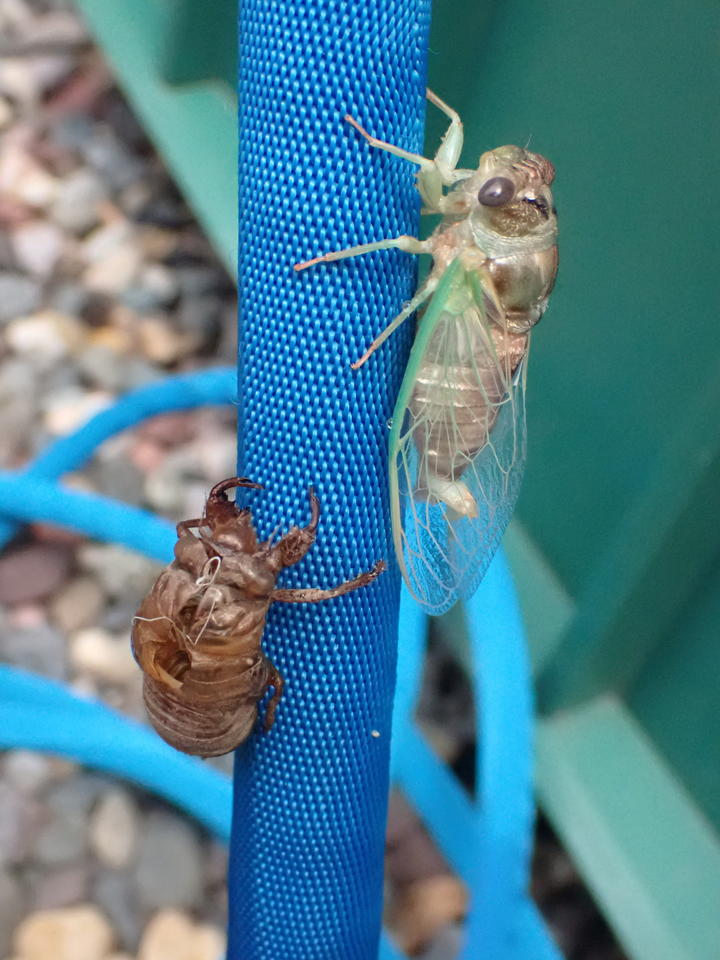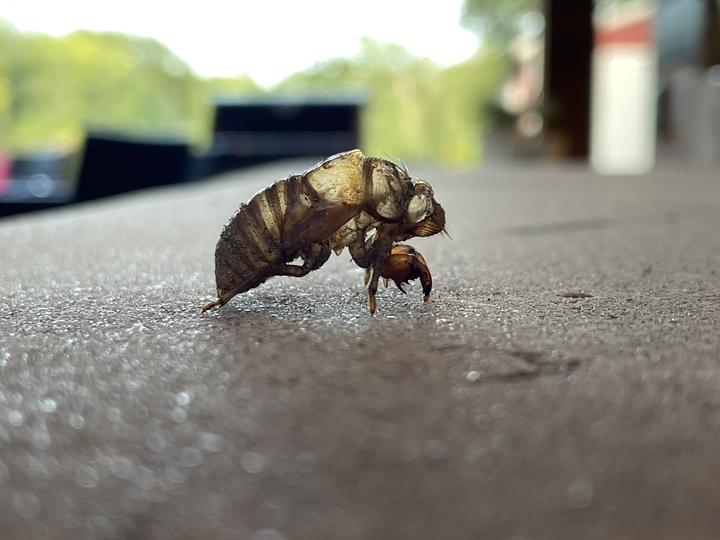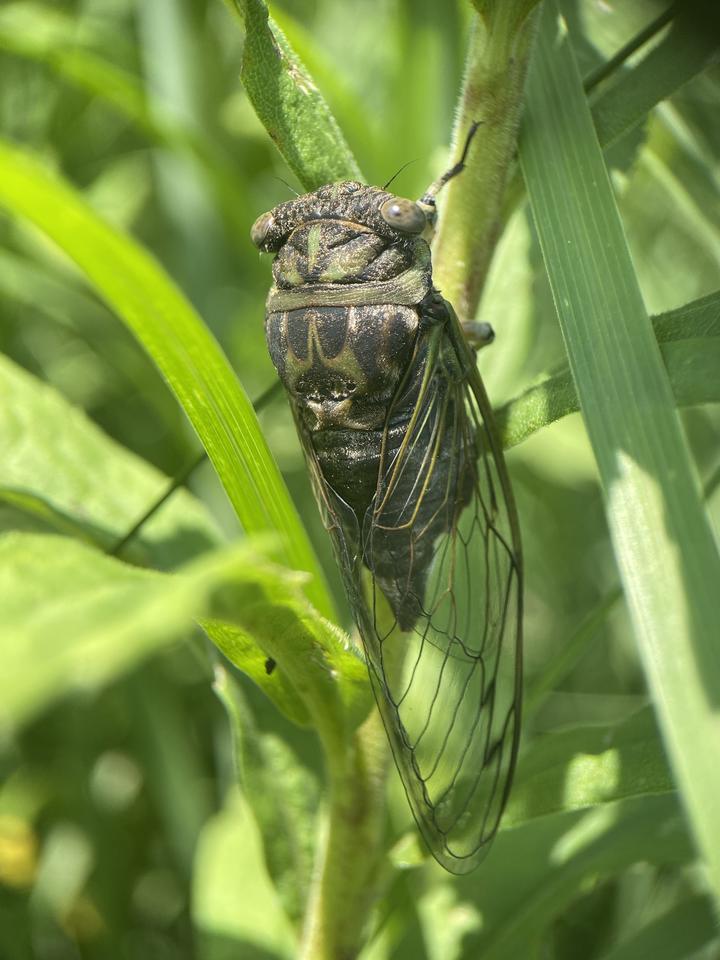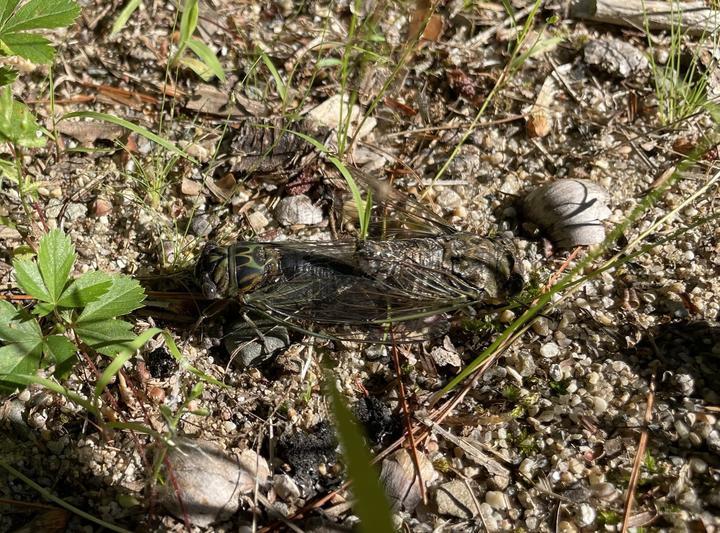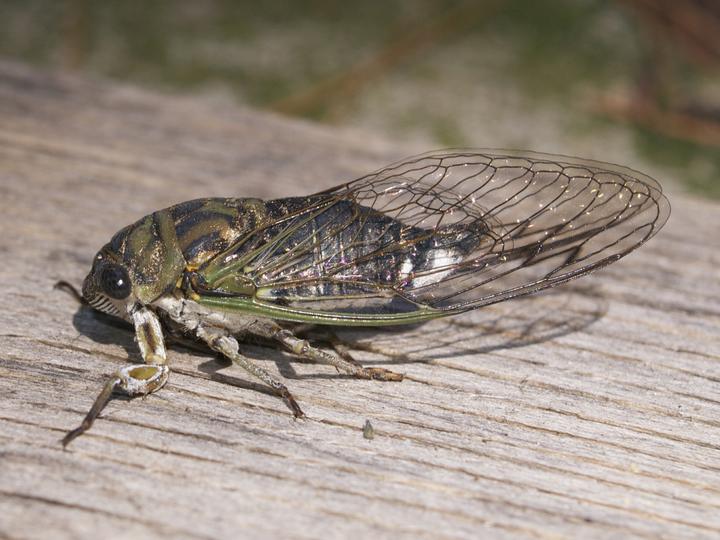More names for this insect
The Dakota and Anishinaabe were among the earliest people to name Minnesota’s plants and animals, as well as to understand them in relation to Minnesota’s climate and seasons. Those original names are still in use, and several are included on the Season Watch website. However, complete translations were not available.
Latin (or scientific name): Neotibicen (Neotibicen is the name of a genus with many species, several of which live in Minnesota.)
The scientific community has a convention of assigning agreed-upon Latin names to every kind of organism. Using scientific names helps people communicate confidently about the same organism and organize lifeforms based on how closely related they are.
More common names: Dog-day harvestfly, heatbug
Page contents
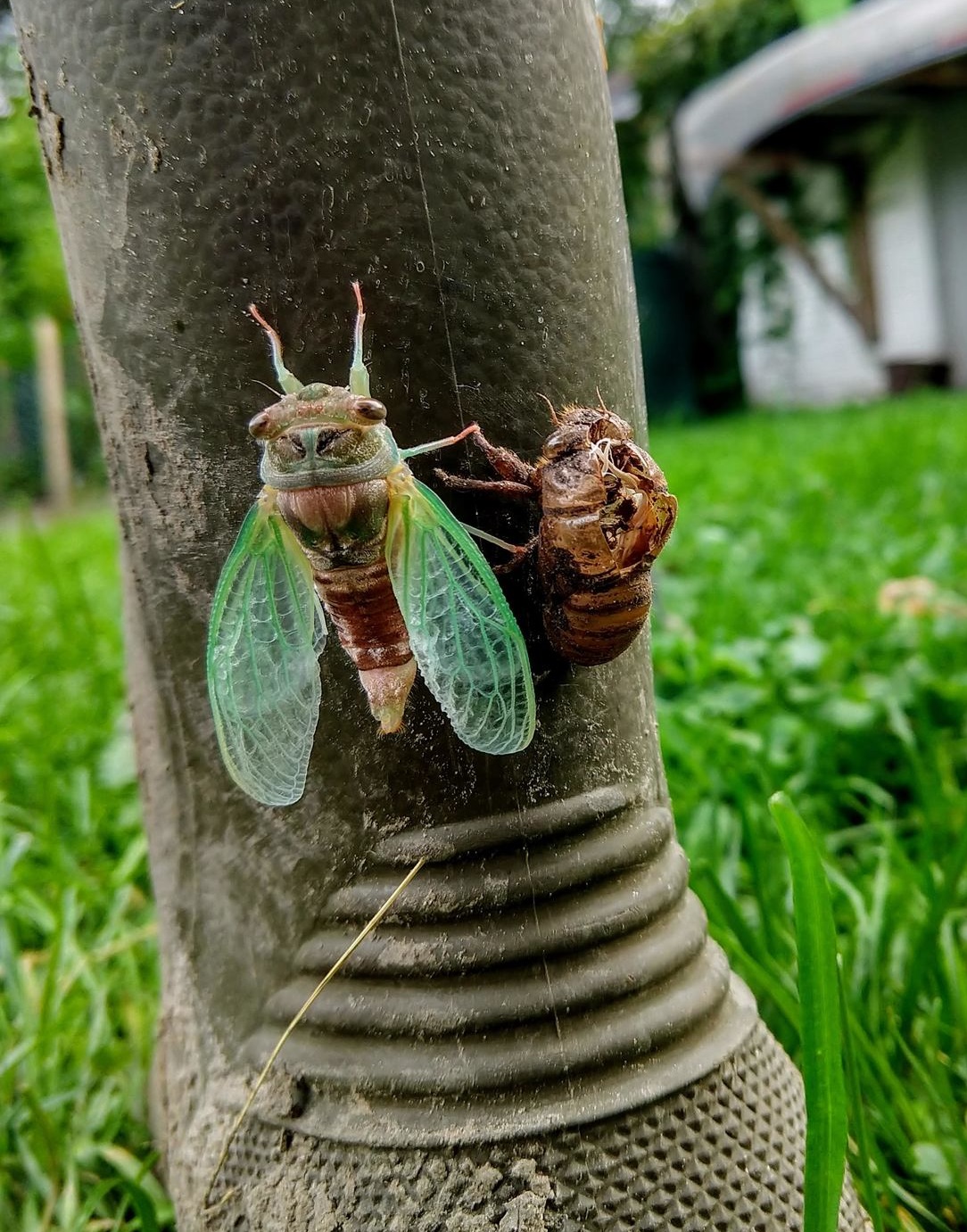
August 2019, Hennepin County, Minnesota
Photo © Tony Schollmeier, some rights reserved (CC-BY-NC)
iNaturalist observation
About the dog-day cicada
- Adult cicadas are large, stout insects that are green or brown in color. They have two pairs of clear wings and short antennae.
- Nymph cicadas do not have wings and are typically dark brown. When a nymph morphs into an adult, it leaves behind a hollow skin.
- There are two major categories of cicadas:
- Dog-day cicadas have a two- to five-year life cycle. They emerge every year in Minnesota.
- Periodic cicadas have longer life cycles. They emerge all at once in large numbers every thirteen to seventeen years. Periodic cicadas do not occur in Minnesota.
- More often heard than seen, the distinctive humming of adult cicadas is a feature of Minnesota summers.
Visual guide to phenology
Watch for dog-day cicadas' presence (or absence) and abundance at different times of year.
Note to observers
This page explains general clues to watch and listen for when observing dog-day cicada phenology. However, this page does not explain how to identify this insect or collect data in a standardized way.
- Consult a field guide for help with identification.
- For guidance on collecting data, see Nature’s Notebook.
July 31, 2022, Toronto County, Ontario, Canada
Recording © Noam Markus, some rights reserved (CC-BY-NC)
iNaturalist observation
July 25, 2021, Houston County, Minnesota
Recording © Mathew Zappa, some rights reserved (CC-BY)
iNaturalist observation
August 10, 2020, Peterborough County, Ontario, Canada
Recording © Don Sutherland, some rights reserved (CC-BY-NC)
iNaturalist observation
Graphs and historical data
Note: The Orientation Center provides a map, as well as information on reading graphs; interpreting summary statistics, who collected the data and how; and how to download datasets for independent exploration.
Keep exploring Season Watch
Keep exploring Season Watch
Co-author: Audrey Negro, Minnesota Master Naturalist
